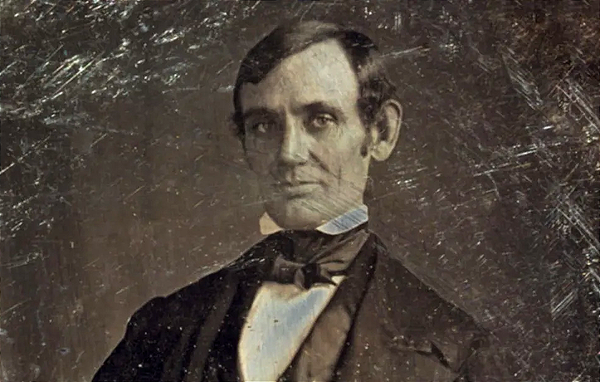Most of what you've heard about Tulipmania isn't true

From Lorraine Boissoneault for The Smithsonian: "When tulips came to the Netherlands, all the world went mad. A sailor who mistook a rare tulip bulb for an onion and ate it with his herring sandwich was charged with a felony and thrown in prison. A bulb named Semper Augustus sold for more than the cost of a mansion in a fashionable Amsterdam neighborhood, complete with coach and garden. Speculation exploded, with traders offering exorbitant prices for bulbs that had yet to flower. For decades, economists have pointed to 17th-century Tulipmania as a warning about the perils of the free market and speculation. The only problem: none of these stories are true."
These popular houses in LA were part of a scam by a con artist who disappeared

From Laura Kaiser for Atlas Obscura: "A group of house in Los Angeles have acquired something of a cult following. Featuring multiple gables, steep-slope roofs, arched doorways, and trowel-swept stucco walls, these six-room storybook cottages are a unique time capsule of the 1920s. Known as Janes Village, the homes are still highly desirable today. But few people know that the man who built the houses was a con artist. After completing almost 400 homes and announcing plans to build a thousand more, he disappeared. Turns out E.P. Janes was not a famed architect, but a high-school drop-out who had peddled miracle cures and defective mail-order tires—earning him several lawsuits."
Google Earth shows that cow and deer herds align like compass needles

From Ed Yong for National Geographic: "For centuries, farmers have known that their livestock not only gather in large herds but also tend to face the same way when grazing. They stand perpendicularly to the sun’s rays in the cool morning to absorb heat, or they stand in the direction of strong winds to avoid being unduly buffeted and chilled. But there's more to it than that. A researcher spied on aligned herds of cows and deer using satellite images from Google Earth. The images revealed a striking behaviour that had been going unnoticed for millennia, right under the noses of herdsmen and hunters – their herds were lining up in a north-south line like a living compass needle."
Editor's note: If you like this newsletter, I'd be honoured if you would help me by contributing whatever you can via my Patreon. Thanks!
A game of Rock, Paper, Scissors decided a $20 million auction consignment

From Alina Cohen for CNN: "The Japanese electronics giant Maspro Denkoh Corporation had decided to auction off works from its art collection worth about $20 million, during the Impressionist and modern art sales in New York. The collection included a landscape by Cézanne, as well as works by Picasso, van Gogh, Gauguin, and Renoir. Unable to choose whether to consign the trove to Sotheby’s or Christie’s, company president Takashi Hashiyama put the decision in the auction houses’ hands: Representatives from each company would visit Maspro’s Tokyo office to compete in a game of rock, paper, scissors."
Taylor Swift fans dancing at a concert were recorded as seismic activity

From The Economist: "Shake, shake, shake, shake,” Taylor Swift sings from the stage of Lumen Field in Seattle on July 22nd. The fans respond, enthusiastically; the stadium duly shakes; a nearby seismometer takes note. To pop aficionados “Shake it off” is an empowering up-tempo anthem played at 160 beats per minute. To the Pacific Northwest Seismic Network, which is designed to monitor earthquakes, it is a 2.6 hertz signal in which the amplitude of the acceleration was as large as one centimetre per second, per second. When Ms Swift came to town for two nights of her Eras tour, Jacqueline Caplan-Auerbach, a geology professor at Western Washington University, used the opportunity to learn more about how events in the stadium shake its surroundings."
Why is a mile defined as being five thousand two hundred and eighty feet?
From Peter Magnusson: "The conventional wisdom on this topic goes something like this: the mile was originally 5000 feet. It was changed to 5280 feet in Elizabethan times around the year 1600 to accommodate the furlong, which was 660 feet. It was easier to fix the mile rather than the furlong for various reasons, hence, eight furlongs and 5280 feet in a mile. The problem with these versions is that they don’t explain why this collision between furlong and mile occurred around 1600, and not centuries before. I’ve pieced together my own theory over the years: the number 5280 arises out of a collision between organized religion, the military, and taxation. And naked Greeks are involved as well."
This 16-storey building in Japan has a highway running through it
This is the Gate Tower Building in Osaka, Japan.
— Trung Phan (@TrungTPhan) August 24, 2023
The 16-storey office building has a highway running through the middle of it (floors 5-7).
Its wild design is due to a legal battle in the mid-1980s between real estate developers and the local government.
The landowners planned… pic.twitter.com/hjhtI5SfgV
Acknowledgements: I find a lot of these links myself, through RSS feeds etc. But I also get some from other newsletters that I rely on as "serendipty engines," such as Rusty Foster's Today In Tabs, Clive Thompson's Linkfest, Maria Popova's website The Marginalian, The Morning News from Rosecrans Baldwin, Why Is This Interesting, Dan Lewis's Now I Know, Robert Cottrell and Caroline Crampton's The Browser, Sheehan Quirke AKA The Cultural Tutor, the Smithsonian magazine, and JSTOR Daily. If you come across something you think should be included here, feel free to email me. Thanks to David Weinberger for sending the tweet at the bottom!



